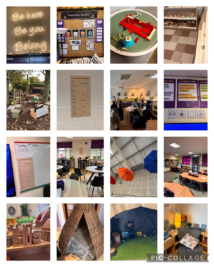Who is IQM?
IQM is the only national inclusion award in the UK. For over 20 years and in over 20 countires, schools, MATs and Local Authorities use the Inclusion Quality Mark to recognise exemplary inclusive practice.
Get in touch for your FREE school information pack today.
Creating Inclusive Learning Environments which support Neurodivergent Learners
January 28, 2025
On 29th January 2025, our Directors, Joe and Eilish McCann, will visit the House of Lords, to discuss ‘Realising the potential of neuro-diverse learners – a celebration of personal achievement and innovation in education’. To celebrate this, we will share articles about neurodiversity and how IQM schools are providing an excellent education for neuro-diverse learners.
In this article, Sarah Linari, one of our Executive Leads for School Improvement, shares a case study of Whitefield Primary School, a Centre of Excellence.

Whitefield Primary School has made significant strides in creating learning environments that support neurodivergent learners, ensuring that the needs of both the few and the many are met. Central to this initiative is the belief in the rights of the learner, ensuring that each child is an active participant in their education, not a bystander.
Recognising the higher level of need, particularly in Upper Key Stage 2, the school completely overhauled the classroom layout and design. With many pupils being neurodivergent and/or having experienced trauma, a therapeutic learning environment was created.
Consistency is a key factor at Whitefield, with visual timetables and consistent learning routines across all classes. Seating arrangements are carefully thought through from each learner’s perspective, and learning partners are changed every week to foster collaboration and social skills.

To cater to the diverse needs within the pupil demographic, the school has introduced innovative equipment such as standing desks and sensory trays. Pupils work at round tables or high work benches, with breakout areas and zoned spaces for flexible working. The décor follows a calming classroom approach, with neutral colours, natural effects, and foliage. Cozy features like a reading den, sofa area, and blankets help pupils feel calm and secure. Pupils have autonomy in choosing their workstations, contributing to a purposeful and engaging learning atmosphere.
Cognitive science principles are embedded into the curriculum, and adaptations ensure that children of all levels can learn alongside their peers. Knowledge notes and organisers are dual-coded, and teachers focus on the “how” rather than the “what” of teaching, using the “I do, we do, you do” structure. Each pupil at Key Stage 2 is provided with a 1:1 Chromebook, further enhancing their learning experience.
Creating inclusive environments came at a cost, with approximately £2000 invested per classroom. However, the school believes this investment is essential to support the daily practice and ensure that every child has the opportunity to thrive.
By focusing on these comprehensive strategies, the school has created a supportive and inclusive environment that supports the needs of neurodivergent learners, ensuring they are active participants in their education and prepared for future success.

Other Posts

About IQM
The only national award for inclusion in the UK, IQM has been committed to recognising exemplary inclusive schools for over 20 years and in over 20 countries around the world. The three awards allow schools and organisations to dcelebrate their inclusive practice against nationally recognised framework.
Site Links
© 2025 Inclusion Quality Mark | website developed & cared for by digidoda


